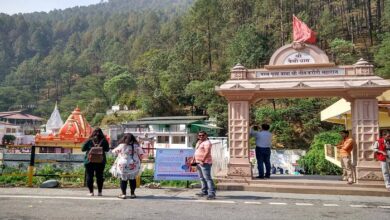The Magic of Desi Vocal Music: Exploring the Heartbeat of Indian Tradition

Desi vocal music, deeply rooted in India’s rich cultural heritage, is one of the most powerful and expressive forms of art. With its intricate rhythms, soulful melodies, and emotional depth, it has become a symbol of India’s musical identity. In this blog post, we will take you through the fascinating journey of desi vocal music, exploring its history, key elements, popular genres, and the modern-day revival of this art form.
The History and Origins of Desi Vocal Music
Desi vocal music has a long and illustrious history that dates back thousands of years. This tradition is intricately tied to the spiritual and cultural practices of the Indian subcontinent. The origins of desi vocal music can be traced to ancient scriptures, including the Vedas, which laid the foundation for Indian classical music. The development of ragas (musical scales) and talas (rhythmic cycles) in the classical tradition became the backbone of desi vocal music.
During the medieval period, the influence of Persian, Mughal, and other foreign musical styles blended with local traditions, giving rise to new forms of desi vocal music. Over centuries, various regional styles emerged, each with its unique flavor, influenced by the diverse cultures and languages of India. This evolution has made desi vocal music a vast and varied tradition, encompassing a range of styles from classical to folk and devotional music.
Key Elements of Desi Vocal Music
Desi vocal music stands out due to its reliance on specific musical elements such as ragas, talas, and improvisation. A key characteristic of this music is its focus on melody and rhythm, with the vocalist being the focal point of performance.
Ragas:
Ragas form the melodic foundation of desi vocal music. Each raga has its own set of rules and is believed to evoke specific emotions, moods, or times of the day. Ragas are not just scales but also emotional expressions, with the singer’s voice bringing them to life.
Talas:
Talas, or rhythmic cycles, are another crucial element in desi vocal music. The combination of complex rhythmic patterns with the raga creates an intricate balance that makes desi vocal music highly engaging and energetic.
Improvisation:
One of the most captivating features of desi vocal music is the art of improvisation. Unlike Western classical music, where compositions are followed strictly, Indian vocalists have the freedom to improvise, especially in genres like Hindustani classical music. This improvisation allows the singer to explore the nuances of the raga and create a unique experience every time.
The Popular Genres of Desi Vocal Music
Desi vocal music is incredibly diverse, with various genres that cater to different tastes, occasions, and cultural contexts. Some of the most prominent genres of desi vocal music include:
1. Hindustani Classical Music:
Originating from North India, Hindustani classical music is one of the oldest and most influential genres in desi vocal music. It is characterized by its complex ragas, improvisational nature, and the use of instruments like the sitar, tabla, and harmonium.
2. Carnatic Music:
A southern counterpart to Hindustani classical music, Carnatic music is known for its devotional compositions, intricate ragas, and rhythmic precision. It is highly structured and focuses on vocal clarity and articulation.
3. Devotional Music:
Desi vocal music is closely associated with various religious traditions, and devotional music forms such as bhajans, kirtans, and qawwalis hold an essential place in the culture. This genre focuses on expressing devotion through song, often performed in temples, gurudwaras, or during festivals.
4. Folk Music:
India’s folk music is deeply rooted in regional traditions and languages. Each state or region has its own folk vocal styles that reflect local cultures, from the vibrant bhangra of Punjab to the soulful baul songs of Bengal.
5. Film Music:
Over the years, desi vocal music has found a massive audience in the film industry. Bollywood, in particular, has created a unique space for vocalists who lend their voices to film songs. These songs often blend traditional elements with modern styles, making them appealing to a wide range of listeners.
The Role of Desi Vocal Music in Modern India
While desi vocal music has deep traditional roots, it continues to thrive and evolve in contemporary India. The rise of fusion genres and the increasing popularity of music streaming platforms have brought desi vocal music to a new generation of listeners.
In recent years, there has been a resurgence of interest in traditional desi vocal music, particularly in urban centers. Classical music concerts, reality TV shows, and music festivals celebrating desi vocals are becoming more common. The fusion of desi vocal techniques with contemporary genres like pop, rock, and electronic music has also brought new life to the genre.
The Best Desi Vocal Artists and Their Influence
India has produced some legendary vocalists who have not only shaped the course of desi vocal music but have also gained international recognition. Some of the most influential artists include:
1. Lata Mangeshkar:
A name synonymous with Indian film music, Lata Mangeshkar’s voice has touched the hearts of millions. Her classical training and ability to adapt to various genres made her a versatile artist.
2. Kishore Kumar:
Another iconic figure in Indian music, Kishore Kumar’s voice remains unparalleled in its versatility. He was equally adept at singing romantic, peppy, and melancholic songs.
3. Pandit Bhimsen Joshi:
Known for his renditions of khayal and thumri, Pandit Bhimsen Joshi’s contribution to Hindustani classical vocal music is immense.
4. Ustad Nusrat Fateh Ali Khan:
A global ambassador for Qawwali, Ustad Nusrat Fateh Ali Khan introduced desi vocal music to the world with his soulful renditions and powerful performances.
5. Shreya Ghoshal:
A modern-day icon, Shreya Ghoshal has mastered classical vocal techniques while effortlessly transitioning to playback singing in Bollywood.
Desi Vocal Music and Its Global Influence
The influence of desi vocal music has transcended borders. Artists like A. R. Rahman have successfully blended traditional desi vocals with global music trends, creating a unique fusion that appeals to international audiences. In addition to this, desi vocals have become a staple in global music festivals, especially as the world increasingly embraces multicultural influences.
Music fusion genres like Indo-jazz and Indo-electronic are some of the ways desi vocal music continues to evolve. Singers like Kailasa’s Kailasa, Ravi Shankar, and Anoushka Shankar have introduced global audiences to the beauty of desi vocal traditions.
Learning Desi Vocal Music: A Pathway to Cultural Connection
For those interested in learning desi vocal music, the journey is deeply rewarding. Whether one chooses to study classical music, folk songs, or contemporary vocals, the experience is both spiritual and intellectual. Various music schools and online platforms offer lessons in Hindustani and Carnatic music, with dedicated instructors who preserve traditional methods of vocal training.
Learning desi vocal music also offers a unique way to connect with Indian culture and spirituality. For many, it is not just about learning to sing; it’s about immersing oneself in an ancient art form that has been passed down through generations.
Conclusion
Desi vocal music is a timeless tradition that continues to evolve while preserving its cultural significance. Whether through classical ragas or contemporary Bollywood songs, the power of the voice in desi music remains unmatched. As the world becomes more connected, desi vocal music’s ability to transcend boundaries and unite people is more important than ever. Whether you’re a listener or an aspiring vocalist, there’s no denying the beauty and depth of this musical tradition.
FAQs
- What is desi vocal music? Desi vocal music is a genre of Indian music that includes classical, folk, devotional, and film music. It is known for its intricate ragas, rhythms, and emotional depth.
- How can I learn desi vocal music? You can learn desi vocal music through classical music schools, online courses, or by finding a mentor who specializes in either Hindustani or Carnatic music.
- What are the different types of desi vocal music? Desi vocal music includes Hindustani classical music, Carnatic music, devotional music (bhajans, kirtans, qawwalis), folk music, and film music.
- Who are some famous desi vocalists? Famous desi vocalists include Lata Mangeshkar, Kishore Kumar, Pandit Bhimsen Joshi, Ustad Nusrat Fateh Ali Khan, and Shreya Ghoshal.
- How has desi vocal music influenced global music? Desi vocal music has influenced global music through fusion genres, international performances, and collaborations by artists like A. R. Rahman, Ravi Shankar, and Anoushka Shankar.





